From its mythical role in the formation of Rome to its presence in the wild today, the wolf is an iconic symbol of Italy. Jenny Oldaker goes on the trail of this elusive predator.
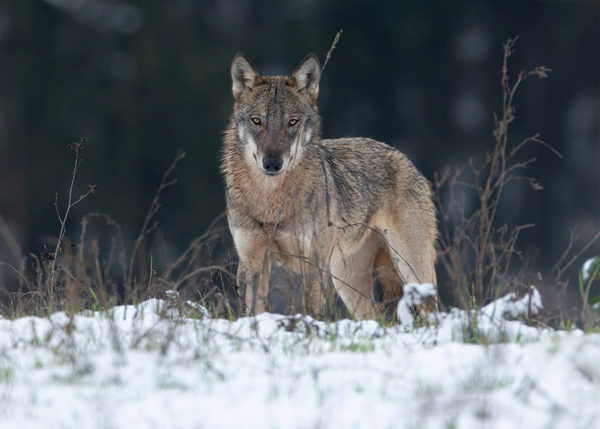
No animal in Italy is quite so culturally significant – or so divisive – as the wolf, and myths surrounding the creature date back to the Ancient Romans and beyond.
Evidence of wolf cults among ancient tribes, Etruscan wolf-like gods such as Calu, and the pagan Lupercalia festival – whose name derives from the Latin word ‘lupus’ (wolf ) – all bear testament to the animal’s enduring symbolic influence.
It’s in the tale of the founding of Rome, however, that the wolf really takes centre stage in the Italian story. The legend goes that the founders of the city, Romulus and Remus, were rescued and suckled by a she-wolf after being thrown into the Tiber River by King Amulius.
The myth has long been a powerful symbol for the city – the twins’ father was Mars, so the image of the babies being nurtured by a wolf represents the sons of the God of War absorbing animal strength from a powerful predator.
Or, as Terry Jones puts it in his 2007 book Barbarians: An Alternative Roman History, ‘The Romans did not see [the tale of Romulus, Remus and the she-wolf ] as a charming story; they meant to show that they had imbibed wolfish appetites and ferocity with their mother’s milk.’
The story has inspired countless artworks; the Capitoline She-Wolf in Bronze in the Musei Capitolini is the most famous, but artists from Rubens to Carracci have committed the story to canvas too, and it continues to capture the artistic imagination; modern interpretations include a fabulous 1928 wire sculpture by Alexander Calder at the Guggenheim, New York.
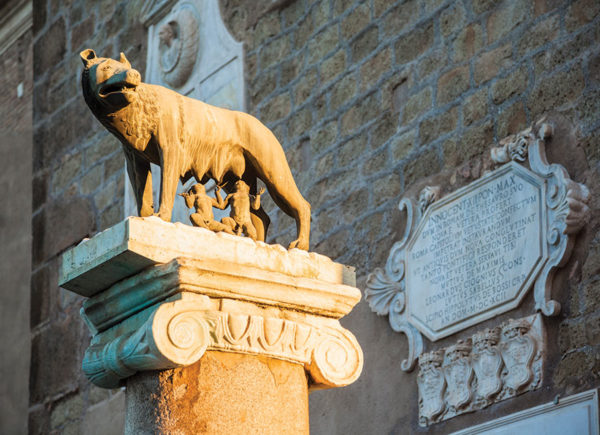
Our reaction
This rich historical symbolism, coupled with its role in European folklore and fairytales as the archetypal villain, has contributed to the wolf ’s reputation today, and has affected our reaction to the animal.
“The wolf carries a strong cultural imagery,” agrees Francesco Romito of conservation NGO Io non ho paura del lupo (I’m not afraid of the wolf ).
“It is not only one of the most important predators of European forests, but is also an animal that over the centuries, in culture and religion, has taken various forms: there are those who have hated it, there are those who have made it special.
“The issue of culture remains central to wolf conservation, and today it is an animal we need to work with, and to address its imagery in our heads.’
Thankfully for wolves in Italy, organisations like Francesco’s are taking on this work and helping counter the animal’s public reputation. Having been driven to the brink of extinction during the course of the 20th century, conservationists intervened and wolves were first given legal protection in Italy in the 1970s.
Their numbers started to recover soon after and have been steadily rising, and their ranges increasing.
“Today you’ll find wolf populations all over Italy, except on the islands,” explains Angela Tavone of Rewilding Apennines, an organisation dedicated to the rewilding movement in this part of Italy.
“They are doing well according to the latest census (in 2021), which estimated more than 3,300 animals in our country. If you consider that 50 years ago there were only around 100 left in the Central Apennines, their recovery is definitely a success!”
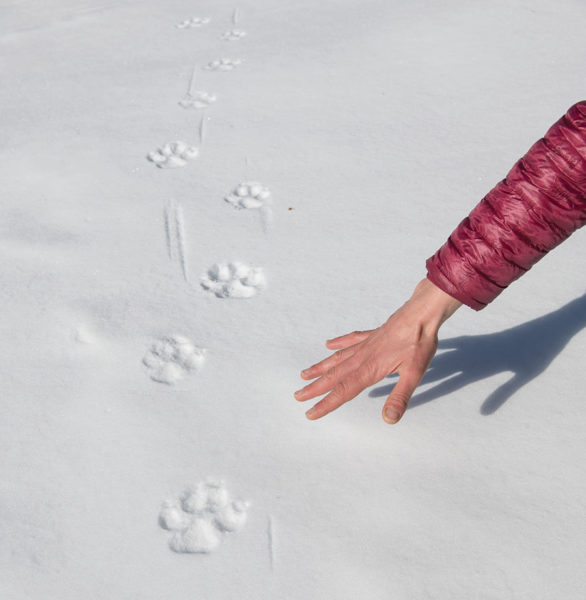
The price of success
Such success doesn’t come without a price, however. There are still major challenges faced by Italian wolf populations, and their growing numbers have brought problems: the presence of wolf populations in an area can ignite ancient prejudices, and unlawful persecution such as poaching and poisoning is still rife.
The most critical issue, however, is the relationship between livestock owners and wolves – even with protection wolves can prove a risk to grazing animals and, as a result, to farmers’ livelihoods.
Indeed, incidences of wolf predation on sheep and other animals is often cited as the main obstacle standing between successful wolf-human coexistence.
As such, there is a pressing need to work with livestock owners, and conservation organisations such as Io non ho paura del lupo have placed this issue at the forefront of their work, stating that “the future of the wolf in Italy and Europe is today inextricably linked to the relationship it has with the world of shepherds and breeders.”
The organisation places communication and collaboration at the heart of its work, and aims to support breeders – and other groups likely to have direct contact with wolves – through meaningful action and direct initiatives.
Examples include the ‘wool for the wolf ’ plan, which recovers wool from small breeders, saving them the cost of disposal, then creating pieces from the material and using proceeds from their sale towards the purchase of protection for the breeders.
State compensation is also available for farmers who have been affected by wolf attacks, though it can be a slow process to claim funds and doesn’t cover the wider damage caused by these incidents.
While the problem is far from being solved, it is very much at the forefront of the work of wolf conservationists and new strides are being made all the time in helping farmers and wolves coexist more successfully in Italy.
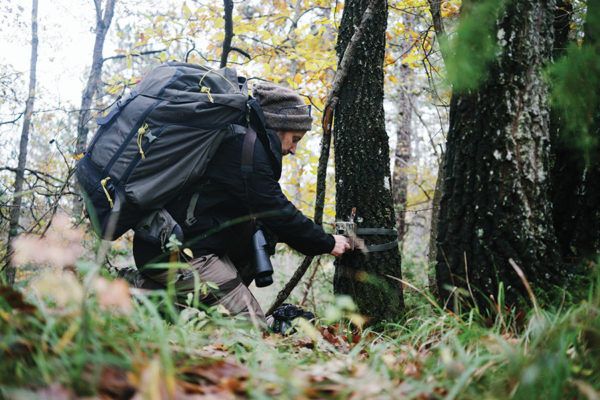
The culture of poisoning
Angela is positive about the wolf ’s current status and the projects in place, but knows there is a long way to go: “‘Some people are still pushing to “manage” the wolf population;
“The culture of poisoning is still widespread and some citizens still see the wolves as antagonists of their economic activities and want to get rid of them (especially in the north of Italy, where the wolves returned more recently).
“So, it is not possible to relax yet, and communication and education is always needed.”
Francesco agrees that education is important among communities who have little knowledge of the wolf and are largely informed by media hysteria and – often erroneous – fears about the species.
“Growing misinformation jeopardises the wolf ’s acceptance by the population, and our aim is to mitigate the negative reputation of this creature at all costs.”
Umberto Esposito of travel company Wildlife Adventures believes that the trips run by his company and other responsible travel organisations can be vital in educating people about the life and role of the wolf in Italy today:
“The wolf is a indigenous species,” says Umberto, “but its reputation is sinister, so objective information is essential, and with our experiences we aim to share awareness both in and out of the national parks.”
Beyond the scare stories and reputational negativity the existence of wolves in Italy is something to celebrate in terms of the wider environment, as their very presence is an indicator of the good health of the ecosystem.
“Wolves are at the top of the food chain and as such can regulate the number and distribution of their prey, such as wild boar, roe deer and red deer and, consequently, these herbivores” pressure on the landscape,’ says Angela Tavone of Rewilding Apennines.
“So, according to the concept of trophic cascades, the wolves can ultimately shape the landscape for the better.”
At the end of the day the wolf isn’t a villain. As Umberto points out, ‘To conserve it, we really need to see it for what it is: neither a good nor a bad animal, but one that has an important role in our ecosystem and which is fundamental to maintaining an ecological balance.”
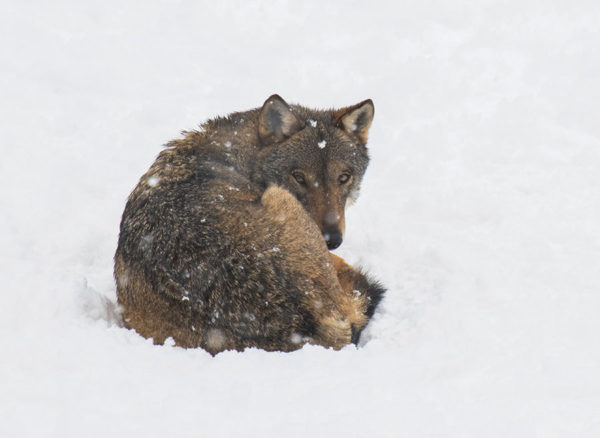
Animal Symbolism in italy
The wolf has been adopted as an unofficial national symbol, but it is not the only animal with historical significance…
The Lion
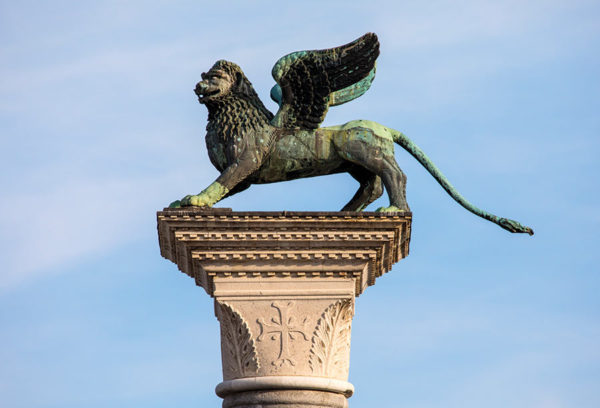
The winged lion of Venice represents the city’s patron saint, Mark, and is a symbol of the city’s power and identity that goes back hundreds of years.
The lion is also associated with Florence – the Marzocco is the heraldic lion, symbolising the power of the Florentine Republic.
The first Marzocco sculpture is thought to date back to the 14th century.
The Eagle
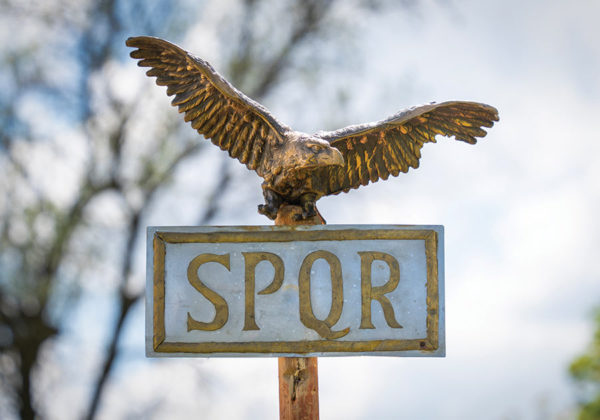
The eagle represented strength and immortality in Ancient Rome, with the Aquila emblem associated with the empire, including as the standard for the Roman legion.
The Sparrow
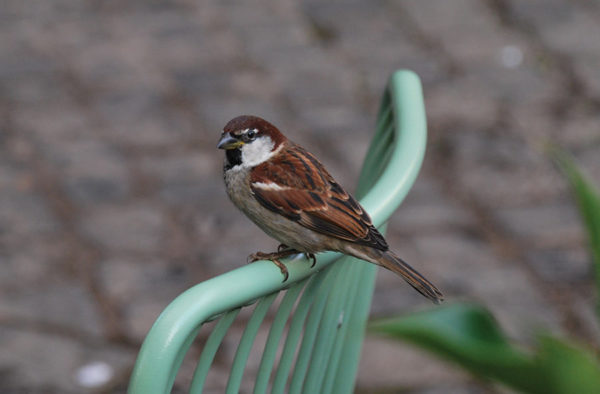
Perhaps surprisingly, Italy’s national bird is not a powerhouse bird of prey like the eagle, but the Italian sparrow (Passer italiae).
This little bird is common across the country, though it is hard to classify – thoughts are divided as to whether it’s a subspecies of the house sparrow, or the Spanish sparrow, or a hybridisation of the two.
The Snake
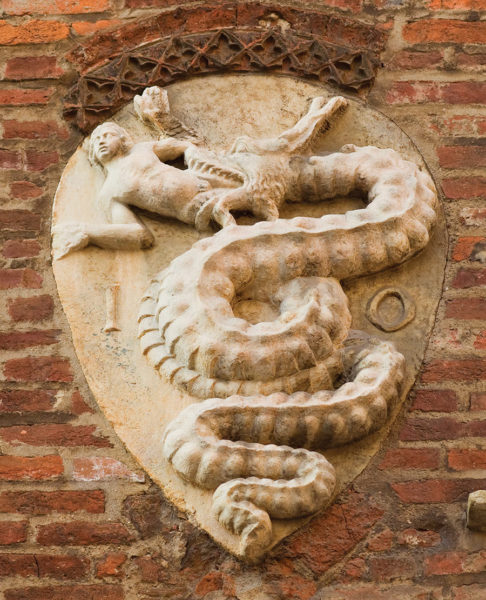
The biscione (big grass snake) is a heraldic symbol of Milan, showing a serpent devouring a person.
The snake was an icon of the Visconti family who rose to power in the city in the Middle Ages.
Today it can be seen in local organisations from Inter Milan football club to Alfa Romeo cars, whose manufacturer is based in the city.
Find out more:
Organisation dedicated to ensuring the conservation of the wolf in Italy and Europe, and its successful coexistence with human activities.
Rewilding Apennines works with the Italian members of the European Rewilding Network to boost the country’s rewilding movement.
Nature-based tourism company, offering experiences that promote green tourism, supporting wildlife conservation and developing environmental education. Its trips include the chance to track wolves and learn more about the animals in Abruzzo.
European Alliance for Wolf Conservation (EAWC)
A coalition of NGOs advocating for the use of preventive non-lethal means to achieve co-existence with wolves, in accordance with the protection granted by the EU Habitats Directive and the Bern Convention.
Project that aims to improve wolf-human coexistence through a participatory approach, with the goal of guaranteeing long-term conservation of transboundary wolf populations in Alpine countries.
Discover more in our Italian Culture Archive
